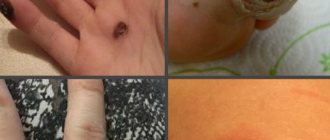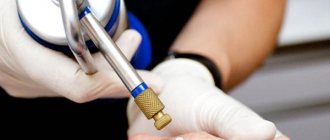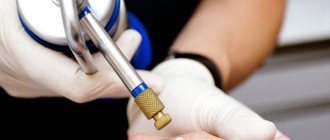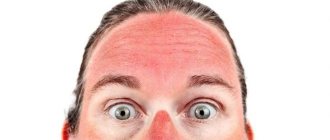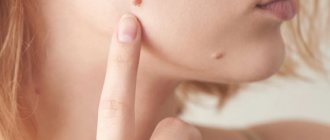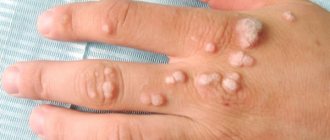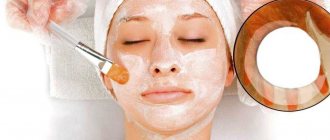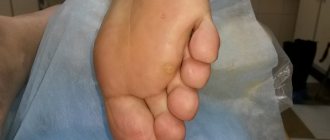Warts, papillomas and other formations on the human body bring a lot of inconvenience. To the question of whether it is possible to cut off warts yourself, the answer is clear - no. Mechanical damage to the skin will lead to infection, and in the worst case, increase the number of unpleasant skin formations. If the wart interferes with normal movements, it is better to go to the hospital, where it will be removed in compliance with the necessary safety measures.
There are many superstitions surrounding the injury of warts, but there are some precautions you should know.
Is it possible to cut off warts?
Being a benign skin neoplasm, a wart has a so-called “root”, which is not only responsible for intensifying the growth of skin cells, but can also lead to autoinoculation, spreading the pathological process to healthy tissues of the body. It is not difficult to understand what will happen if you cut off a wart, given the fact that it is impossible to remove the root of the formation on your own. As a result, not only will there be a growth of a new defect at the site of the previous neoplasm, but also generalized warts (EVLL) may develop.
Independent mechanical removal of warts does not bring the expected effect, primarily due to the fact that the main reason for the formation of such epidermal growths is the human papillomavirus (HPV), which, after cutting off the wart, does not disappear from the patient’s body, but, on the contrary, is activated. It should also be taken into account that the growth of a primary tumor is always provoked by a decrease in immunity and its susceptibility to the development of various pathologies, which also does not contribute to the improvement of the patient’s condition after cutting out the wart.
In addition, removing warts on your own can lead to the following unpleasant consequences:
- Heavy bleeding . This reaction to mechanical trauma to warts and papillomas is due to the wide proliferation of vessels and capillaries that nourish the body of the neoplasm. Sometimes it is quite difficult to stop bleeding on your own, which can lead to significant blood loss.
- Spread of the virus to healthy areas of the skin. As mentioned above, warts are prone to growth, which can be caused by the contact of infected blood with the surface of healthy epidermal structures. Subsequently, skin cells begin to actively divide, forming daughter warts.
- Formation of scars and scars . To understand what will happen if you tear off a wart on your face, it is enough to look at a huge number of photos on the Internet that show scars and cicatrices after self-removal of epidermal growths.
- Infection of the wound surface . An open wound, against the background of a weakened immune system of the owner of a wart, is prone to infection, which can be manifested by the development of an inflammatory process, swelling, hyperemia and suppuration of the wound, and can also provoke a systemic infectious process that is dangerous to human life and health.
All these unpleasant consequences can be completely avoided by promptly seeking advice from an experienced specialist, who will first of all help determine the type of neoplasm. The fact is that sometimes warts can be confused with such manifestations as calluses, syphilitic formations, lichen planus, etc. If the diagnosis is incorrect, removing the defect on your own can have dire consequences for the body.
How to get rid of warts
Warts often go away on their own. Treatment depends on the type of wart, the patient's age, and his or her health. Sometimes warts, including those caused by HPV infection, disappear and later recur.
We recommend that you consult a doctor in any case, since self-treatment can lead to disappointing results. By contacting PrivatKlinik you receive a doctor’s consultation and a 100% solution to your problem; a cosmetologist or surgeon will help you in the medical center.
Cryotherapy is a procedure doctors use to freeze common warts using liquid nitrogen. The procedure is suitable for older children and adults. Because it can be a little painful, cryotherapy is not performed on small children. It may take several cryotherapy sessions to effectively freeze the warts. Liquid nitrogen freezing works best in combination with other treatments.
Cantharidin is an over-the-counter wart treatment that is applied to the wart and stimulates the formation of a blister. After about a week, the blister dries out and falls off, taking the wart with it. Cantharidin is a good treatment for warts in children because the drug is painless. People receiving topical treatment may experience tingling, burning, swelling, or itching in the area several hours after application.
Some warts, especially filiform warts, plantar warts and common warts, can be treated by cutting them off and/or burning them. The official name for this type of treatment is electrosurgery (burning out) and curettage (curettage). These two procedures are often used together. The doctor freezes the area to be treated. Then uses an electric tool to burn off the wart. Sometimes laser treatment is used. Curettage involves using a knife or spoon-shaped instrument to scrape off the wart.
What to do if you accidentally pick off a wart?
It is not uncommon for a patient to accidentally tear off a wart. The doctor will also tell you what to do in such a situation, but before going to a medical facility, you should definitely disinfect the injury site and try to stop the bleeding as quickly as possible. It is important to apply a tight bandage.
Removing warts is a complex medical task, which today involves the use of such hardware techniques as laser destruction , electrocoagulation and cryodestruction. Highly qualified specialists of the NEOMED clinic, who care about both the health and aesthetic condition of each patient, will help you decide whether it is better to remove warts with laser or nitrogen.
Find out the cost of the procedure “Removal of tumors”
Rules for the treatment and treatment of postoperative wounds
Most often, laser technology and cryodestruction are used to remove warts, and to a lesser extent, radioknife and surgery. This also affects how long it takes for the resulting wound to heal after wart removal. In general, among the factors that predetermine the time required for healing, experts name:
- size and configuration of the tumor;
- general condition of the body, especially its immune system;
- compliance with the doctor’s recommendations for postoperative wound care, its correct and timely treatment.
.
What to do if injured?
If the wart has been damaged in any way, it is necessary to take a number of preventive measures. The complex is aimed at reducing the risk of the disease spreading to other healthy areas of the skin, reducing the likelihood of infection. The set of necessary actions includes treating the wound and isolating it. Recommended actions in case of damage are as follows:
If a wart is injured, treat the area with alcohol and apply a bandage.
- Wash the area with a disinfectant. It is acceptable to use medical alcohol or hydrogen peroxide. Apply a cotton swab or bandage moistened with the indicated products to the site of the breakdown and wait until the bleeding stops.
- If there is pain, you can use a local anesthetic or painkiller.
- Cover the area where the wart is torn off with a plaster and go to the hospital as soon as possible. After conducting an examination, the doctor will give recommendations on further actions.
By damaging a wart, a person risks aggravating the development of HPV disease. It is capable of affecting the skin at high speed, capturing area after area. Further complete removal of the virus from the body is possible, but this requires a significant amount of time and effort. Paying attention to your skin and performing the complex in case of damage makes it possible to quickly eliminate the disease, reducing the number of unsightly looking scars and cicatrices.
Can warts be picked off or cut off?
The discomfort caused by such formations forces people to eliminate them on their own using improvised means - cut them off with scissors, tie them with thread, or tear them off with a fingernail. These methods only lead to worsening the situation. First of all, you need to know that such benign formations have roots and the ability to reproduce. By peeling off the top layer of the formation, there is a high probability of damaging the capillary vessels passing through it. The bleeding will not be severe, but if it gets on healthy skin, it will provoke the spread of the virus and the appearance of new warts.
The cause of such benign formations is the human papillomavirus (HPV). Once in the blood, it leads to the proliferation of epithelium in the affected area, forming a root and blood vessels for nutrition. The wart is not located only on the surface of the skin, it is only its upper part. Therefore, independent mechanical removal will lead to nothing but complications.
Possible consequences
If a person has such benign formations, he should carefully monitor their size, quantity and not remove them himself. It can be damaged accidentally, but this does not cancel the negative effects. Cutting a wart with scissors or accidentally damaging it during normal physical activity leads to a number of negative complications. Common complications include the following:
- Bleeding and scar formation. If you tear off the formation yourself, then due to damage to the blood vessels in it, bleeding is possible. Sometimes it is quite abundant for such a small injury, and after scarring the wound will leave an unpleasant scar.
- Increase in the number of warts on the body. Due to the virus contained in the blood, when it comes into contact with the skin, the affected areas are likely to enlarge.
- Infection in the damaged area. The development of the inflammatory process will worsen the situation.
If you pick off a wart yourself without the necessary sterilization, the risk of infection increases. Taking into account possible complications, it is better to seek professional help from doctors to eliminate unwanted growths. Medicine has made progress in the fight against unwanted formations and growths on the skin. There are several methods of painless and anemic removal that minimize the likelihood of developing recurrent formations on the skin. These methods are accessible and inexpensive, but effective and safe.
How to prevent accidental damage to warts?
You cannot remove warts on your own, but accidental damage to the warts can be prevented. To do this, you need to follow and follow some of the recommendations that will help reduce the risk. There are few of them and they do not require special conditions and funds. The general list of recommended activities is as follows:
Caution in daily life and hygiene will help to avoid accidental injury to warts.
- cut your nails short;
- If possible, wear loose, non-tight underwear;
- do not use rough washcloths;
- after a shower, use soft towels, pat the skin gently, do not rub harshly or roughly;
- Particularly disturbing formations should be removed in medical institutions.
By following these simple rules, you can make it easier to coexist with warts. Under no circumstances should you cut off a wart yourself or remove it using any other method. If it comes off accidentally and damages blood vessels, you should immediately take a series of measures to treat the affected area, then show it to a doctor. The best method to prevent damage is to remove it in a timely manner.
